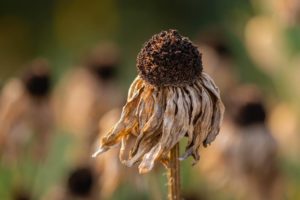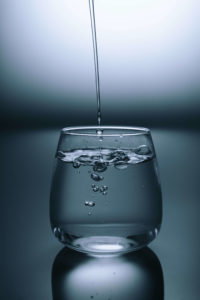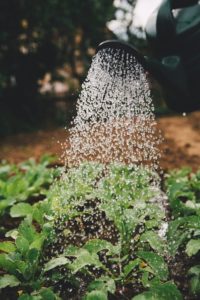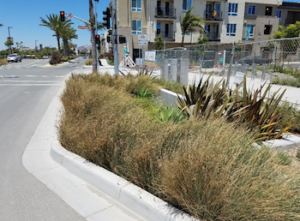
Drought is a frequent occurrence in California, thanks to the variable climate and the effects of global climate change. Combined with the increasing frequency and intensity of wildfires, it’s more important than ever to use water with care. We’ve compiled a big list of easy ways to save water at home. Pick a few and try them out! You may find it’s easier than you think to reduce your water usage.
Conserving Water: Why Does It Matter?
The water we use every day is stored in local reservoirs. There’s plenty of water to drink and use when reservoir levels are high. But in times of drought, they decrease. The less water there is in reservoirs, the higher the concentration of pollutants. This means that at very low levels, there’s a risk that the water might become unsafe to drink. Whether we’re in times of drought or not, conserving water ensures there’s enough water to go around and that it’s safe for everyone to use.
In addition, when reservoir levels become low, it means there’s less water available to fight wildfires. Water can be transported from other locations, but that takes time. When wildfire season starts, deep lakes and reservoirs help ensure firefighters can easily access water.
Water Usage in California
In America, the average family uses over 300 gallons of water every single day. In California, water usage varies in different seasons, but it averages to 85 gallons per person per day, according to data from the State Water Resources Control Board. For a 2-person family, that’s 170 gallons a day, or 5,100 gallons a month. A family of 4 uses twice that—340 gallons a day, or 10,200 gallons a month.
Water is a precious resource, and it’s always a good idea to be thoughtful about how much your family is using, and for what purposes.
You Can Save Water at Home!
There are so many ways you can conserve water, which helps keep reservoirs and other water sources full.
Reduce Your Household Water Usage
It may not seem like much water comes out of faucets and showerheads, but they use a lot! A standard showerhead puts out 2 gallons per minute, while a standard bathroom faucet uses 2.2 gallons per minute. This means that with a few simple changes in how you use water, you can save a significant amount on a daily basis:
- Turn off the faucet – Don’t leave it running when washing your hands, shaving, or brushing your teeth. Just turn it on to rinse.
- Take showers instead of baths – A standard bathtub holds up to 80 gallons of water, while a 10-minute shower uses 20 gallons or less. You’d have to shower for over 30 minutes to use as much water as you would when taking a bath!
- Run half loads in the dishwasher and washing machine when you only have a small amount to do – If your machine doesn’t have a setting for half loads, wait until it’s full before running a wash cycle.
- Repair leaky faucets and showerheads – Even a slow drip means gallons of water are going directly down the drain every day. If it will be a little while before you can get your leaky faucet repaired, collect the dripping water in a container so you can reuse it for something useful, like watering plants.
- Use the low-power flush option on the toilet as much as possible.
- If your toilet doesn’t have dual flush modes, save water by filling a quarter or half-gallon bottle with sand or small stones and placing it in the cistern. The cistern won’t need as much water to fill up, so less is used with each flush.
- Thaw frozen food in the refrigerator instead of under running water.
Reuse Water
Reused water is called gray water. While it’s not suitable for drinking, it’s ideal for watering ornamental flower beds, shrubs, and trees. You can get gray water by:
- Collecting it in a large container or bucket while waiting for the shower to warm up
- Saving the water you use when you wash dishes in the sink
- Collecting water runoff from the washing machine or dishwasher, if your setup allows it
Make sure you don’t use gray water on edible plants, including vegetables, herbs, and fruit trees. Any chemicals in the water will be taken up by the plants and may make them unsafe to eat.
Install Water-Saving Fixtures and Appliances
Upgrading water fixtures and appliances is another good way to save water. California residents can even take advantage of rebate options to help offset the cost of some of these upgrades!
- Use WaterSense faucets and showerheads – They use 25% to 30% less water than standard fixtures. These are EPA-approved for water-efficiency and performance. You’ll use less water and save money on utilities by switching to WaterSense fixtures.
- Get a high-efficiency washing machine – These models use 55% less water than standard appliances. If you regularly use the hot wash cycle, when you save water, you’ll save energy too.
- Opt for a water-efficient dishwasher with the option to do half-load cycles.
- Install WaterSense toilets in your home to reduce the amount of water used on each flush – Or consider installing high-efficiency toilets.
For some of these options, there are rebates available that can make it more affordable to upgrade. Learn more about the rebates you might be eligible for at the SoCal WaterSmart website, and the EPA’s WaterSense rebate finder.
This is much less likely to be necessary in new homes, where builders have almost certainly installed high-efficiency appliances already.
Reduce Water Usage Outdoors
As a homeowner, you may already know that your garden soaks up a lot of water. It can be hard to maintain healthy green space without feeling like you’re constantly running the tap. Fortunately, there are many ways you can modify your lawn or yard to save water in California. And there are rebate options that can make it more cost-effective to plant a drought-resistant garden or convert your turf grass into landscaping, HOA rules permitting.
Use Water Efficiently on Your Lawn and Yard
Depending on the kind of grass you have, your lawn needs about 1 inch of water per week—that’s a little more than 0.5 gallons per square foot. For most homeowners, their lawns are at the top of the water-consumption list. But there are effective ways to reduce the amount of water your lawn uses.
- Follow local water restrictions – By following the rules, you help ensure there’s enough water for everyone.
- Water in the early morning or evening – Cooler temperatures during this time mean less of the water evaporates.
- Don’t overwater – The average yard needs around an inch of water a week. If you’re not sure how long to water for, put some empty cans down at various places around your yard. Time how long it takes to fill them with 0.5 inches of water. Then water for that length of time twice a week.
- If you use a sprinkler system, make sure it’s laid out so landscaping and lawns get the benefit of the water – Don’t waste water with a layout that sprays your driveway or sidewalk.
- Mulch your trees, shrubs, and flowers to help the plants retain more moisture.
- Plant drought-resistant grass in your lawn – Not only will it need less water, it will hold its color better than less drought-tolerant grass. Zoysia and Bermuda grass are good options.
- Mow less often – No more than once every couple of weeks should be fine. Leave the clippings to mulch the grass.
- Plant drought-resistant cacti and succulents, and natives such as California redbud, rockrose, and golden yarrow. They don’t need much water, so your yard will look good even when water is scarce. See our tips for drought-resistant plants here.
Save More by Landscaping Your Lawn
Replanting your lawn with drought-resistant grass is a great option if you love having a lawn. If you don’t need a lawn, consider getting rid of the grass and landscaping the area instead. Removing turf grass is one of the single most effective things you can do to reduce your water usage. Once the job is done, you’ll never have to worry about watering your lawn again! Before getting started, be sure to check what your HOA allows.
The Metropolitan Water District’s Turf Replacement Program can help you offset the cost of converting your lawn. In order to qualify for a rebate, each 100 square feet of turf you convert must include 3 native plants. In addition, the conversion project should include a stormwater retention feature, like a rock garden, rain garden, or rain barrel. If your conversion project qualifies, you may be eligible for a rebate of up to $200 per 100 square feet of turf grass you replace. For more details about outdoor water rebates, see the SoCal WaterSmart website.
Live in a Community That Values the Environment
At Millenia, we care about where we live, and we recognize the impact a neighborhood like ours can have on the local ecosystem, environment, and economy. That’s why we designed our community with an innovative stormwater management system that harnesses the power of rainwater. It earned us the Leadership in Energy and Environmental Design (LEED) certification, recognizing smart growth and green building in new construction. Learn more about how stormwater management works here.
Protecting the environment is a job for everyone. We all have a part to play, and, in California, water conservation is an important piece of the puzzle. Start using these tips to save water at home and you’ll be helping to protect California’s environment and saving money on your utility bills too.



